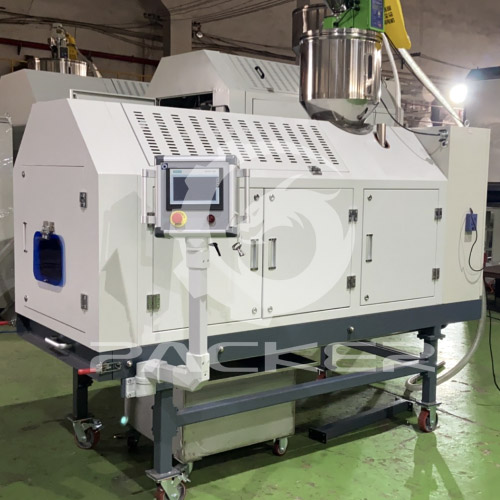Advantages of Using an Infrared System for Drying PLA Compared to Traditional Methods
2024-07-02
In the realm of polymer processing, particularly with Polylactic Acid (PLA), the choice of drying method significantly impacts product quality, efficiency, and sustainability. Traditional drying methods have long been employed, but recent advancements in technology, such as infrared (IR) drying systems, offer compelling advantages that propel PLA processing to new heights.
Understanding Traditional Drying Methods
Traditionally, PLA pellets are dried using methods such as hot air convection or desiccant dryers. These methods involve heating the surrounding air to remove moisture from the pellets. While effective, they come with several limitations:
- Energy Consumption: Traditional dryers often consume significant amounts of energy to heat large volumes of air, leading to higher operational costs.
- Time-Consuming: Achieving optimal moisture levels in PLA pellets can be time-consuming due to slower heat transfer rates and the need for extended drying cycles.
- Uniformity Challenges: Ensuring uniform drying throughout the pellet batch can be challenging, potentially leading to inconsistencies in moisture content and product quality.
Advantages of Infrared Drying Systems
In contrast, infrared drying systems offer a more efficient and effective alternative for drying PLA pellets. Here are the key advantages:
1. Energy Efficiency: Infrared systems utilize radiant heat to directly heat PLA pellets, bypassing the need to heat large volumes of air. This targeted heating reduces energy consumption significantly, making the process more environmentally friendly and cost-effective.
2. Rapid Heating and Drying: Infrared radiation penetrates PLA pellets more efficiently than hot air, resulting in faster heating and drying times. This accelerated process improves production efficiency and reduces overall processing time.
3. Uniform Heating: Unlike traditional methods, infrared systems provide more uniform heating throughout the PLA pellet batch. This uniformity helps maintain consistent moisture levels and enhances product quality and performance.
4. Space Efficiency: Infrared dryers are often more compact than their traditional counterparts, requiring less floor space in manufacturing facilities. This space efficiency can be crucial for optimizing plant layout and operational logistics.
5. Process Control and Automation: Infrared drying systems can be integrated with advanced control systems, allowing for precise monitoring and control of drying parameters such as temperature and moisture levels. This automation enhances process reliability and repeatability.
6. Improved Product Quality: By minimizing the exposure of PLA pellets to prolonged heat and air, infrared systems help preserve the material's mechanical and thermal properties. This results in PLA products with enhanced strength, stiffness, and dimensional stability.
Conclusion
In conclusion, the adoption of infrared drying systems represents a significant advancement in PLA processing technology. By offering superior energy efficiency, faster drying times, uniform heating, and improved product quality, infrared systems outperform traditional drying methods on multiple fronts. As industries continue to prioritize sustainability and operational efficiency, the advantages of infrared drying systems make them an indispensable tool for maximizing the performance and profitability of PLA manufacturing processes.



